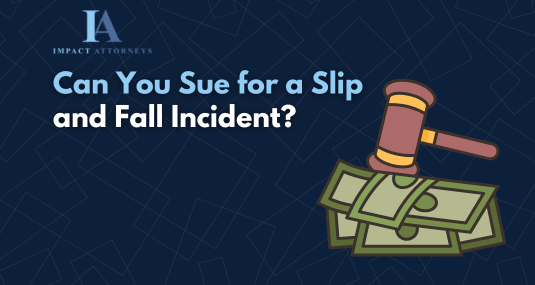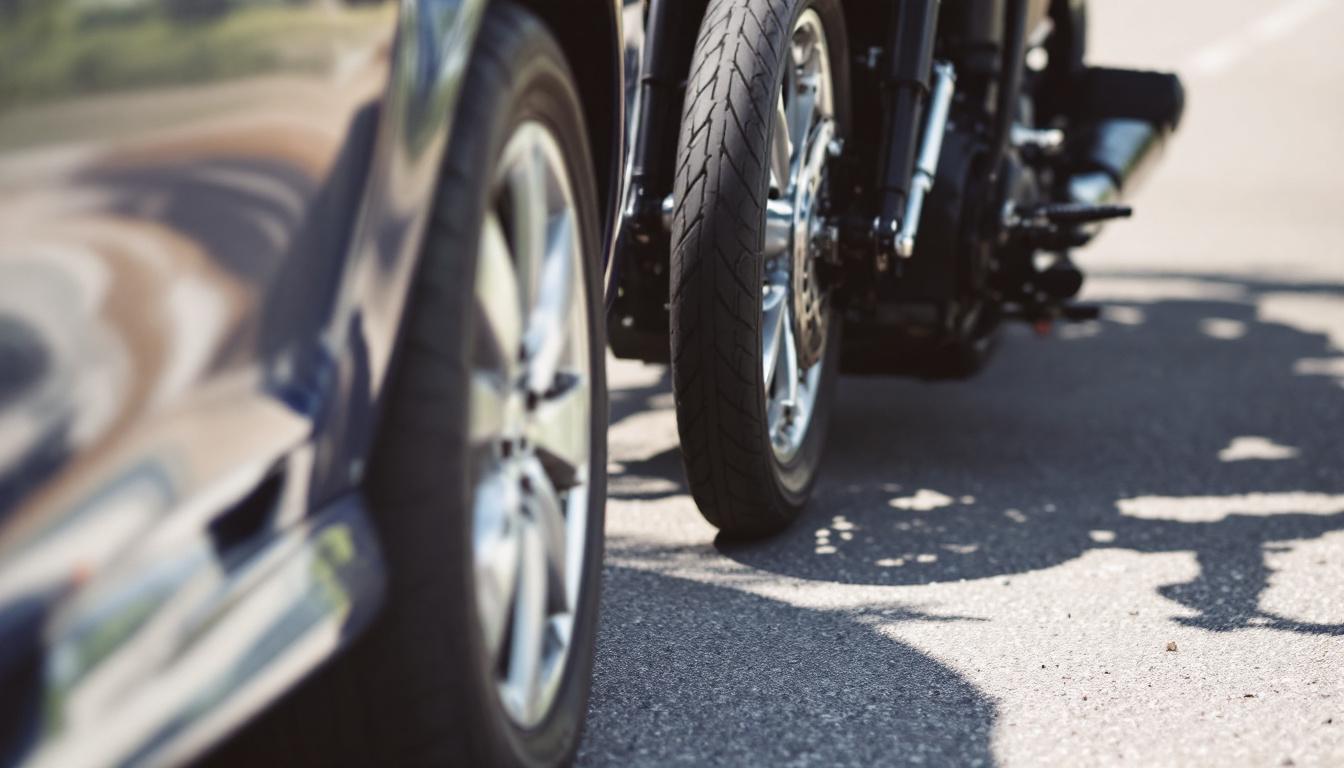Motorcycle-car crashes are a serious concern on our roads, often resulting in severe injuries or fatalities. At Impact Attorneys, we’ve seen firsthand the devastating consequences of these accidents.
This guide offers practical tips for both motorcyclists and car drivers to prevent collisions and promote safer road sharing. By understanding common causes and implementing key safety measures, we can all play a part in reducing the risk of motorcycle-car crashes.
How Can Motorcyclists Stay Safe on the Road?
Gear Up for Safety
Proper protective gear serves as your first line of defense. A DOT-compliant helmet is essential – its use was 66.5 percent in 2022, not statistically different at the 0.05 level from 64.9 percent in 2021 (according to the National Highway Traffic Safety Administration). Don’t stop there. Wear abrasion-resistant jackets, pants, gloves, and over-the-ankle boots. These items can make the difference between walking away from a crash and a trip to the hospital.
Increase Your Visibility
Visibility plays a key role in motorcycle safety. Wear bright, reflective clothing, especially at night. Add reflective tape to your helmet and bike. Use your headlights, even during the day. The Motorcycle Safety Foundation recommends you position yourself in the lane where other drivers are most likely to see you.
Master Defensive Driving Techniques
Assume other drivers don’t see you and always plan an escape route. Keep a safe following distance – at least 4 seconds behind the vehicle in front of you. This gives you time to react to sudden changes. Constantly scan the road ahead, looking for potential hazards like debris, potholes, or distracted drivers.
Maintain Focus and Sobriety
Distracted riding poses as much danger as distracted driving. Never use your phone while riding. Avoid riding when you’re tired, angry, or under the influence of alcohol or drugs. In 2020, 41 percent of motorcycle riders who died in single-vehicle crashes were alcohol-impaired (NHTSA data).
Keep Your Bike in Top Shape
Regular maintenance isn’t just about keeping your bike running smoothly – it’s about keeping you alive. Check your tires, brakes, lights, and fluids before every ride. Pay attention to any unusual noises or handling issues. A well-maintained motorcycle is less likely to fail you when you need it most.
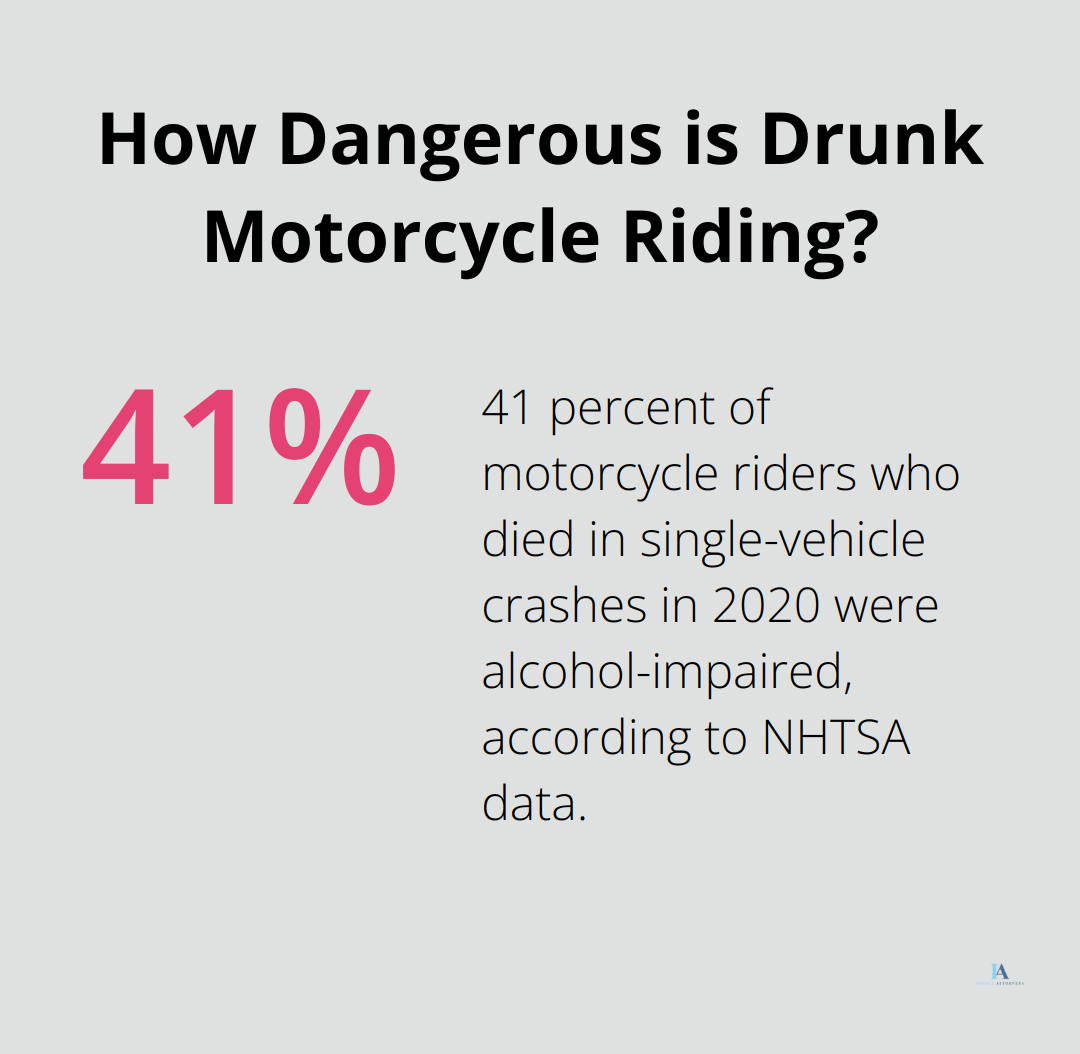
These safety tips can significantly reduce your risk of being involved in a crash. However, accidents can still happen despite your best efforts. In such cases, it’s important to know your rights and options. Let’s now turn our attention to how car drivers can contribute to motorcycle safety on the road.
How Car Drivers Can Protect Motorcyclists
Car drivers play a key role in preventing motorcycle-car crashes. Here are essential ways car drivers can contribute to motorcycle safety:
Check Blind Spots Thoroughly
Motorcycles are smaller than cars, making them easy to miss in blind spots. Develop a habit of checking your blind spots before changing lanes or merging. In 43 percent (1,315) of two-vehicle fatal motorcycle crashes, the other vehicles were turning left while the motorcycles were going straight, passing, or overtaking other vehicles. This statistic highlights the importance of thorough blind spot checks.
Keep a Safe Distance
Provide motorcycles ample space on the road. The Motorcycle Safety Foundation says a 2-second cushion of space in front of you is the minimum for a safe following distance. This extra space creates a safety cushion, allowing both you and the motorcyclist more time to react to sudden changes in traffic or road conditions.
Use Turn Signals Early
Activate your turn signals well in advance of any lane change or turn. This gives motorcyclists time to anticipate your movements and adjust accordingly. A study by the Society of Automotive Engineers found that failure to use turn signals results in approximately 2 million crashes per year (a staggering number that underscores the importance of this simple action).
Make Smooth Movements
Avoid abrupt lane changes or turns, which can be particularly dangerous for motorcyclists. Plan your route in advance and execute smooth, predictable movements. If you need to change lanes or turn unexpectedly, take extra time to ensure it’s safe to do so.
Be Extra Cautious at Intersections
Intersections are high-risk areas for motorcycle-car collisions. The Insurance Institute for Highway Safety reports that 35% of motorcycle deaths in 2020 occurred at intersections. When approaching an intersection, look twice for motorcycles before proceeding. Exercise special vigilance when making left turns, as this is a common scenario for motorcycle-car crashes.

These practices can significantly reduce the risk of motorcycle-car accidents. However, even with the utmost caution, collisions can still occur. In such cases, understanding the common causes of these accidents can provide valuable insights for prevention and legal recourse (should it become necessary). If you have been injured in a motor vehicle accident, either as a driver or passenger, you may be entitled to compensation.
What Causes Motorcycle-Car Crashes?
Motorcycle-car crashes often result from multiple factors. Understanding these causes can help riders and drivers take proactive steps to prevent accidents.
Left-Turn Collisions
Left-turn collisions rank among the most common and dangerous accidents involving motorcycles. Out of 2,598 motorcycle deaths, 1,098 bikers (42%) were killed in left-turn accidents. Additionally, the NHTSA reported that around 22% of traffic accidents involve left turns. To avoid these accidents, drivers must look twice before turning left at intersections. Motorcyclists should approach intersections cautiously, even when they have the right of way.
Lane Splitting Risks
Lane splitting (where motorcycles ride between lanes of slow-moving or stopped traffic) is legal in some states but carries significant risks. Riders should check local laws and exercise extreme caution when lane splitting. Drivers should always check their mirrors and blind spots before changing lanes, especially in heavy traffic.
Rear-End Collisions
Rear-end collisions can devastate motorcyclists. To prevent these accidents, both drivers and riders should maintain a safe following distance of at least 4 seconds. Motorcyclists can increase their visibility by using brake lights and hand signals when they slow down or stop.
Impaired Driving
Alcohol impairment remains a significant factor in motorcycle crashes. Motorcycle operators involved in fatal crashes were found to have the highest percentage (28%) of alcohol-impaired drivers than any other vehicle types. Both drivers and riders must commit to never operate a vehicle under the influence of alcohol or drugs. They should plan for alternative transportation if they intend to drink.
Distracted Driving
Distracted driving concerns all road users. The National Safety Council estimates that cell phone use while driving leads to 1.6 million crashes each year. To combat this, drivers and riders should put away all electronic devices while operating their vehicles. If they need to use their phone, they should pull over to a safe location first.
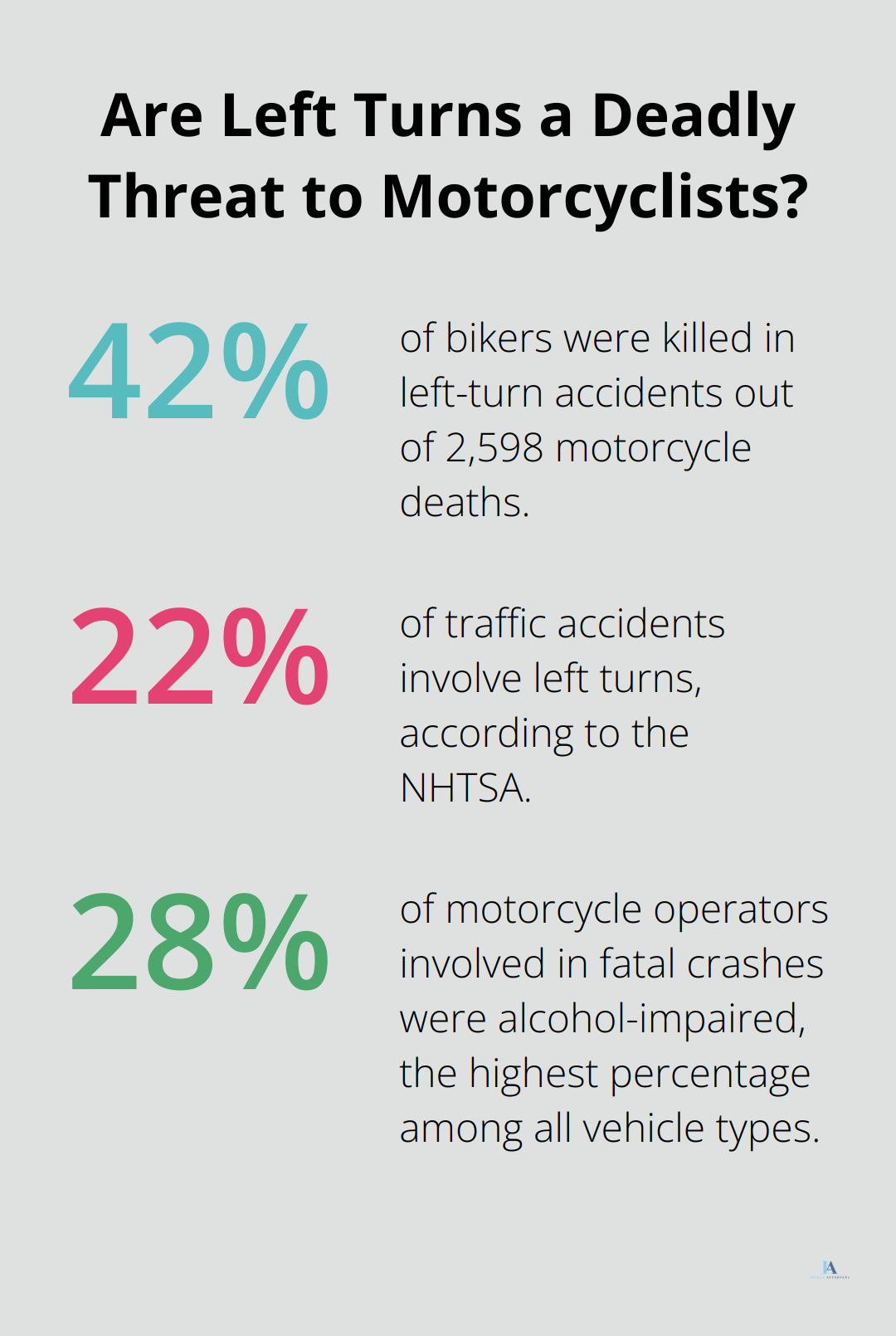
Final Thoughts
Preventing motorcycle-car crashes requires a collaborative effort from both riders and drivers. Motorcyclists must prioritize safety through proper gear, increased visibility, and defensive driving. Car drivers play an equally important role by checking blind spots, maintaining safe distances, and exercising extra caution at intersections.
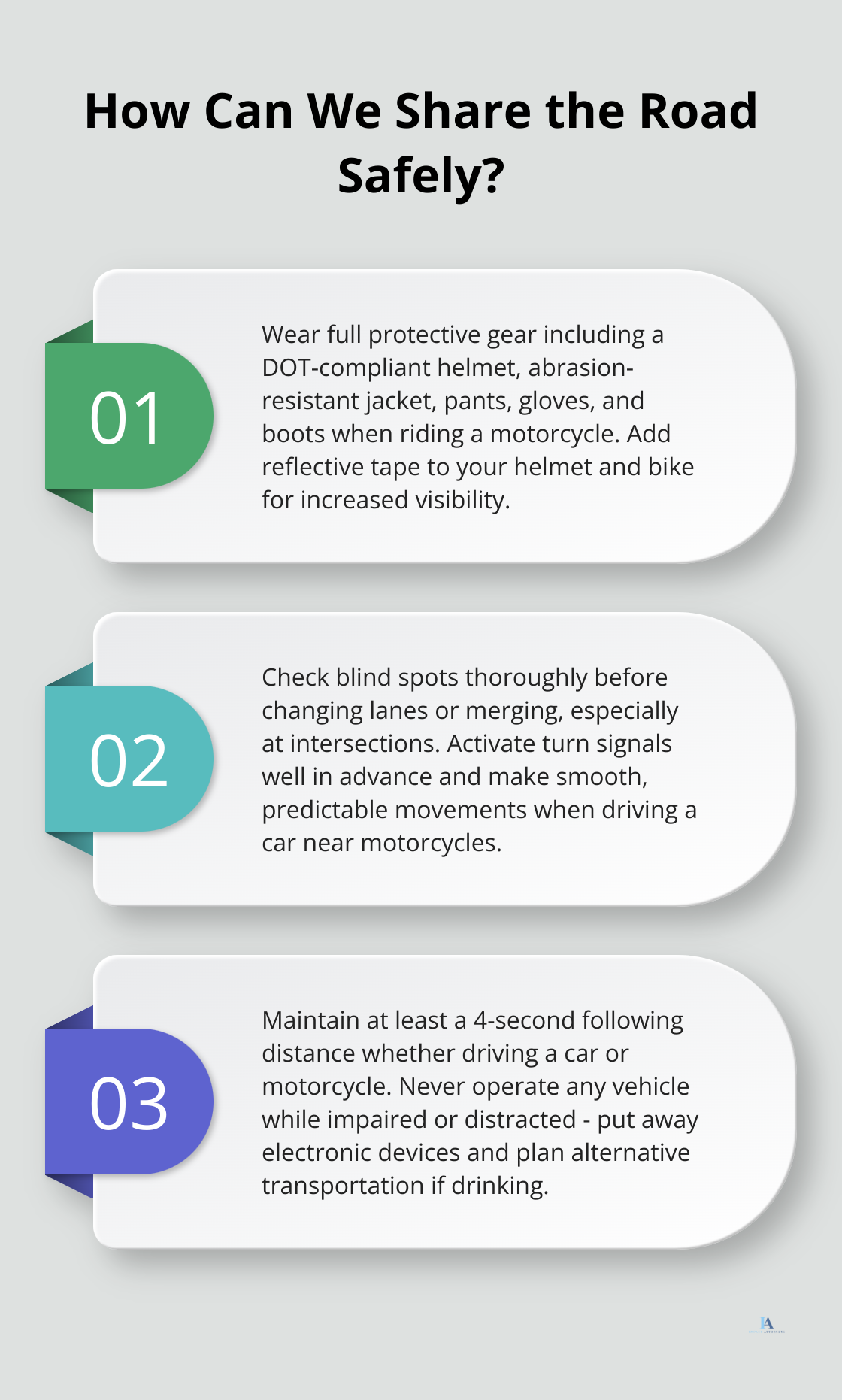
The importance of mutual respect and awareness on the road cannot be overstated. When all road users recognize each other’s unique needs and vulnerabilities, we create a safer environment for everyone. This shared responsibility extends beyond following traffic laws; it involves active lookout for one another and anticipation of potential hazards.
If you find yourself involved in a motorcycle-car crash, prioritize your safety and health first. Seek medical attention immediately, even if injuries seem minor. We at Impact Attorneys specialize in personal injury law and have experience representing victims of motorcycle accidents. Our team handles all aspects of your claim, allowing you to focus on recovery while we fight for your rights.

